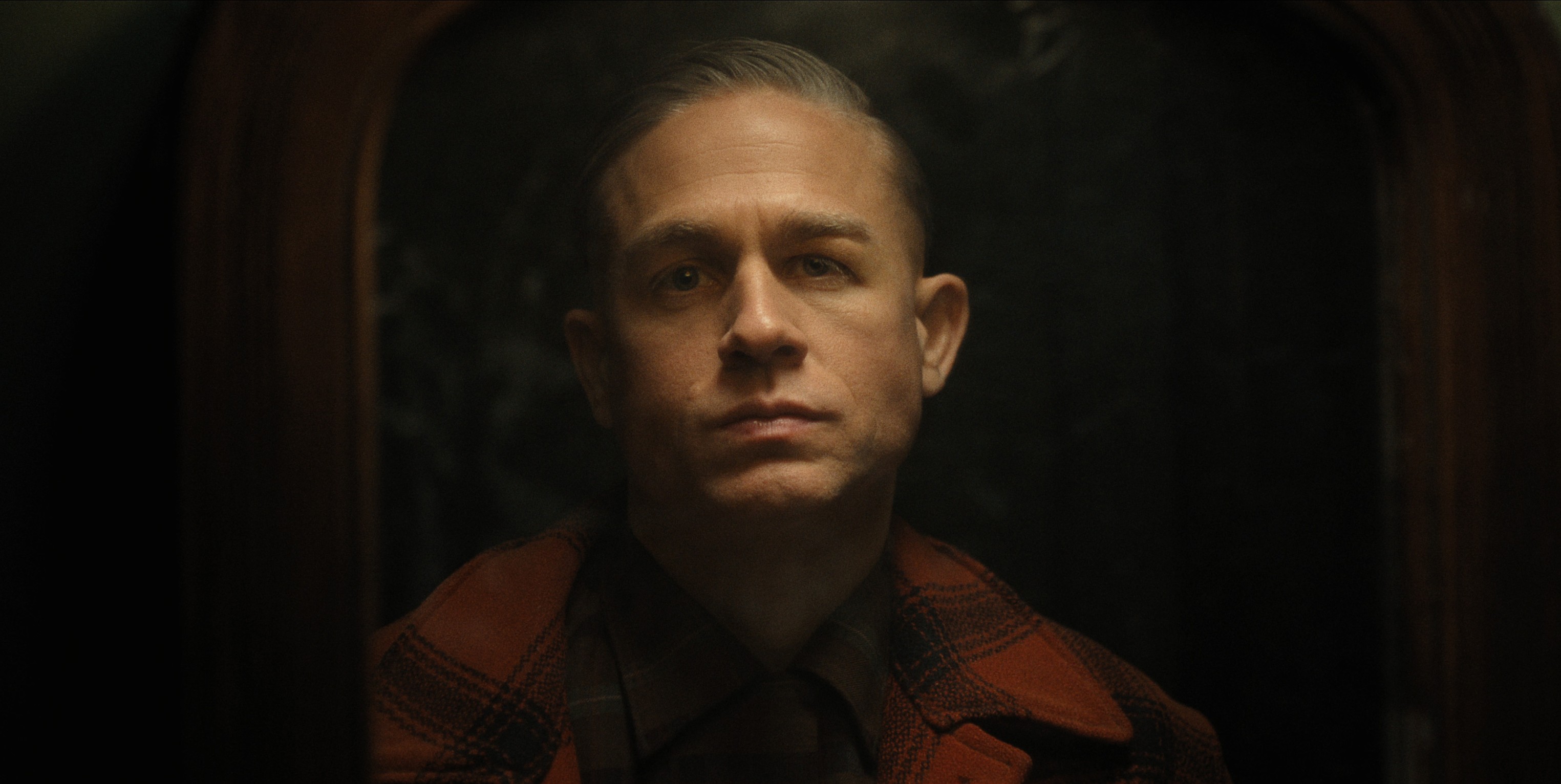Following in the footsteps of ‘The Jeffrey Dahmer Story’ and ‘The Lyle and Erik Menendez Story,’ Ryan Murphy and Ian Brennan’s ‘Monster: The Ed Gein Story’ is the third season of Netflix’s ‘Monster’ series. The biographical crime drama sheds light on the life of Ed Gein, a body snatcher turned serial killer who was criminally active between the 1940s and 1950s. The discovery of his gruesome acts shook the homeland to its very core, prompting a cultural shift that was embodied by a variety of classic films. The show engages in a parallel narrative structure, creatively retelling Ed’s personal life while jumping ahead into the future, where Alfred Hitchcock, among other artists, draws inspiration from him. In doing so, the show delves one step deeper into its commentary on evil and how it is created and perpetuated. SPOILERS AHEAD.
Ed Gein Was Likely Not Transsexual in Real Life
The question of Ed Gein’s exact motivations while performing horrifying criminal acts constantly underlines the narrative of ‘Monster: The Ed Gein Story.’ By the end of the season, Ed’s obsession with Christine Jorgensen, the first widely known person in the United States to undergo sex reassignment surgery, reaches its peak, and he leaves no stone unturned in setting up a radio conversation with her. Once seated, he communicates his belief that he is transgender and how Christine serves as an inspirational figure to him. In this moment, she corrects him by stating that he is not transgender, but gynephilic, which she describes as a desire for the female body potent enough that one wants to be inside it. While the conversation itself has an imagined character, the distinction mentioned here is an intentional choice on the creators’ part.

In an interview with Netflix Tudum, creator Ian Brennan explained: “It was really important for us to make that distinction, for us to say, Look, these are two very different things. And it was cool to be able to put it in the mouth of Christine Jorgensen. For him (Ed) to be told that through her in his mind was a really cool moment.” Notably, the attending psychiatrist informs Ed of this difference, which adds a layer of validity to the in-narrative claim. In real life, medical opinion on Ed’s sexuality does not strongly point to any particular direction; however, a documentary created by Michael D. Moore, titled ‘Ed Gein: American Maniac,’ brings in a unique perspective. For research purposes, Moore traveled to Plainfield, Wisconsin, where he interviewed several local experts about the serial killer. In particular, Moore quoted the words of Doctor Kelleher of Chicago, who described Ed as a “frustrated transsexual.” Nonetheless, with information on the subject being limited, Ed’s sexuality remains largely uncertain.
The Notion of Ed Gein Wearing Women’s Clothing is Rooted in a Shaky Confession
Similar to the idea of Ed Gein being transsexual, the popular belief about the serial killer wearing women’s clothes is not concretely supported by a body of evidence and has likely been exaggerated over time. Many of the narratives around Ed’s choice of dressing can be traced back to the police reports containing his confession. In particular, a conversation with Wisconsin Crime Lab polygraph specialist Joe Wilimovsky is often quoted, where Ed vaguely entertained the possibility of him wearing women’s underwear. However, the interrogation has since been criticized due to the leading nature of the questions, coupled with the ambiguous nature of Ed’s answers. As such, it cannot be said for sure that the serial killer wore women’s clothes. On the other hand, Ed reportedly admitted to creating a “woman suit” made of human skin, in order to emulate the appearance of a woman, potentially his mother, Augusta Gein.

The Netflix series begins with Ed’s mother finding him in her clothes, and the ensuing sequence plays a key role in establishing the show’s tone and sensibility. Across the episodes, Ed shows a fascination with women’s clothing numerous times, often going the extra mile to wear it. However, the lack of sufficient real-life data supporting this portrayal indicates that a blend of fact and fiction has been used to achieve the desired effect. Through this creative addition, the narrative also targets the serial killer’s legacy and how he has been mythologized by popular fiction, most notably movies. In particular, the show brings attention to Jonathan Demme’s ‘The Silence of the Lambs,’ and Alfred Hitchcock’s ‘Psycho,’ which contain characters inspired by Ed Gein. While the antagonist of ‘Psycho,’ Norman Bates, wears women’s clothes on several occasions, Buffalo Bill from ‘The Silence of the Lambs,’ fashions a “woman suit,” integrating the ideas about Ed Gein that have persisted over time.
Read More: Monster: Are Ed Gein’s Skin Suit and Face Mask Real, Prosthetic or CGI?


